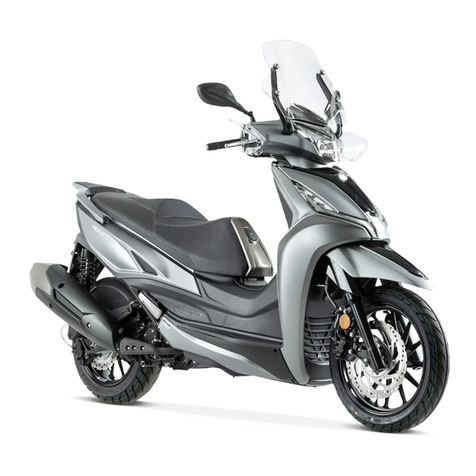KYMCO People S 250 User manual
Other KYMCO Motorcycle manuals

KYMCO
KYMCO Venox 250 Release note

KYMCO
KYMCO downtown 300i User manual
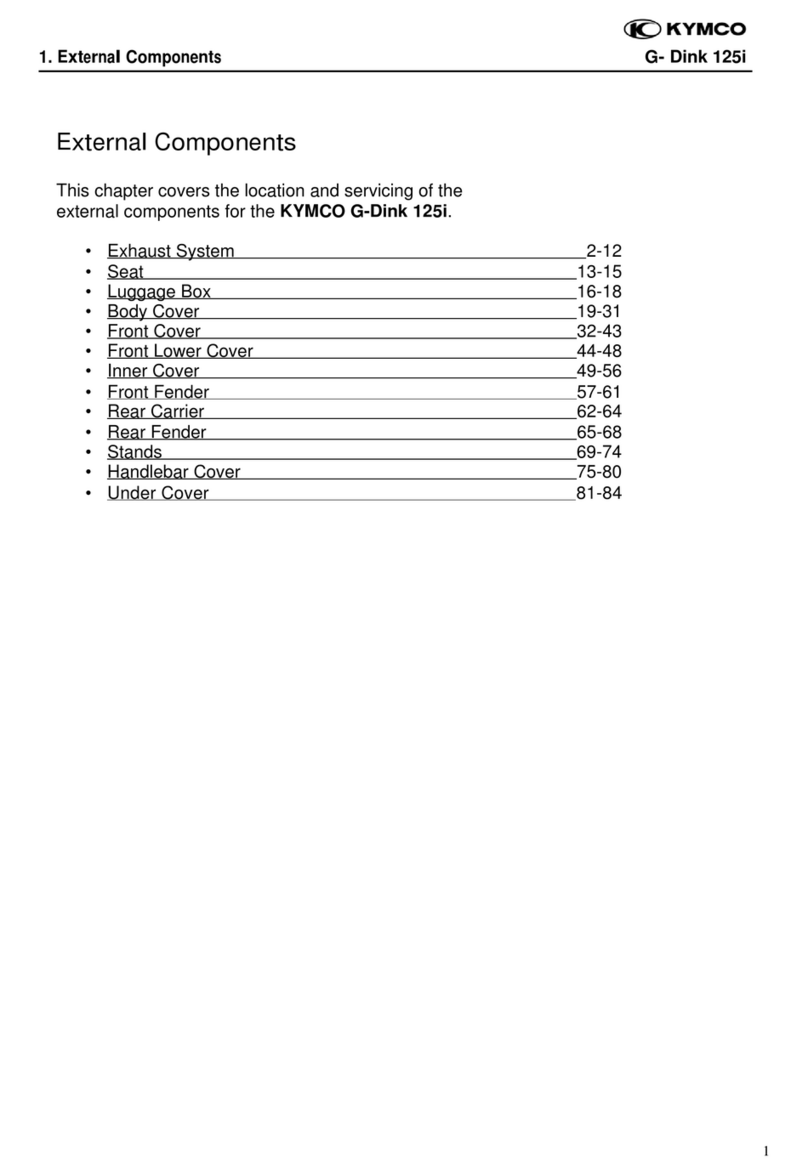
KYMCO
KYMCO G-Dink 125i User manual
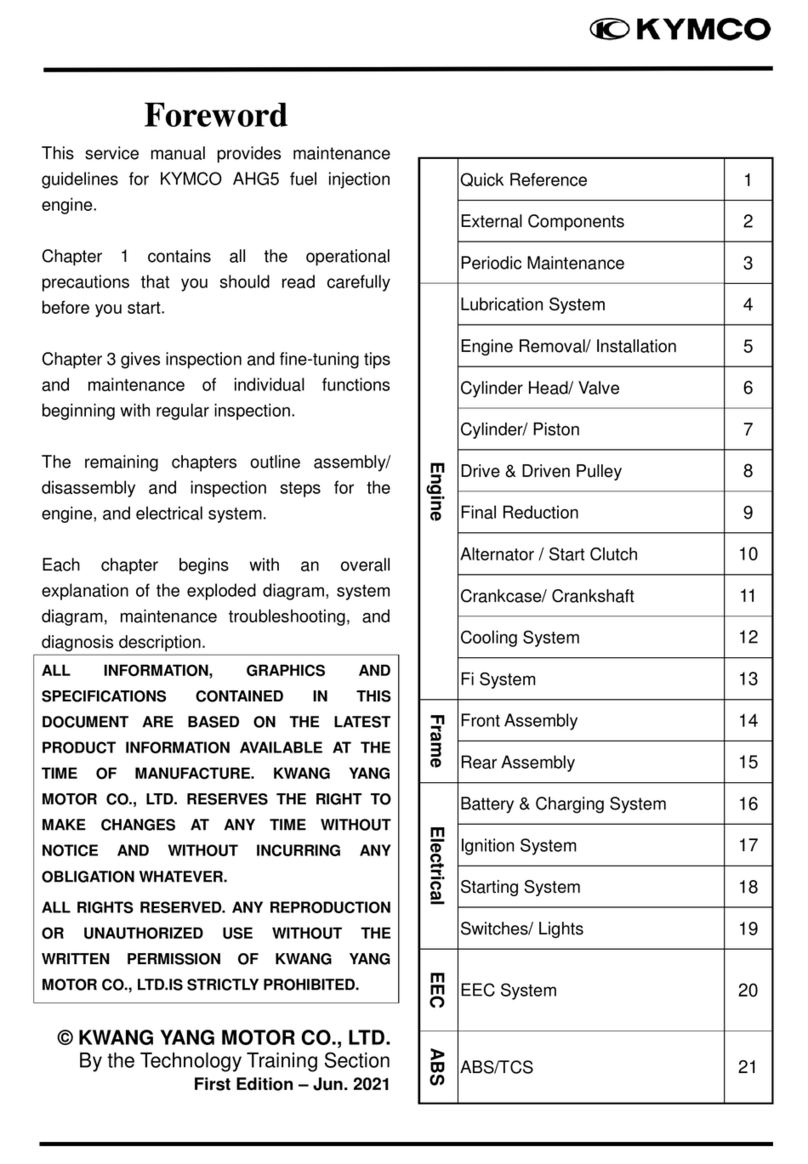
KYMCO
KYMCO AHG5 User manual

KYMCO
KYMCO XCITING 500 User manual

KYMCO
KYMCO 125 ZING II QE - User manual

KYMCO
KYMCO Quannon 150 User manual

KYMCO
KYMCO VISA R 110 User manual

KYMCO
KYMCO Downtown 300i ABS User manual
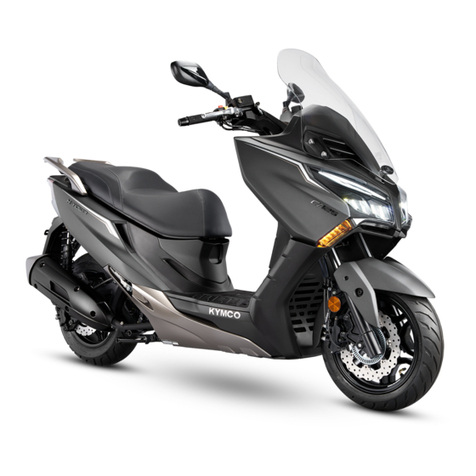
KYMCO
KYMCO X-Town CT125 User manual

KYMCO
KYMCO PEOPLE S 125 User manual

KYMCO
KYMCO XCITING 500 User manual

KYMCO
KYMCO Dink-R 150 User manual

KYMCO
KYMCO K-PIPE 125 User manual

KYMCO
KYMCO Venox 250 User manual
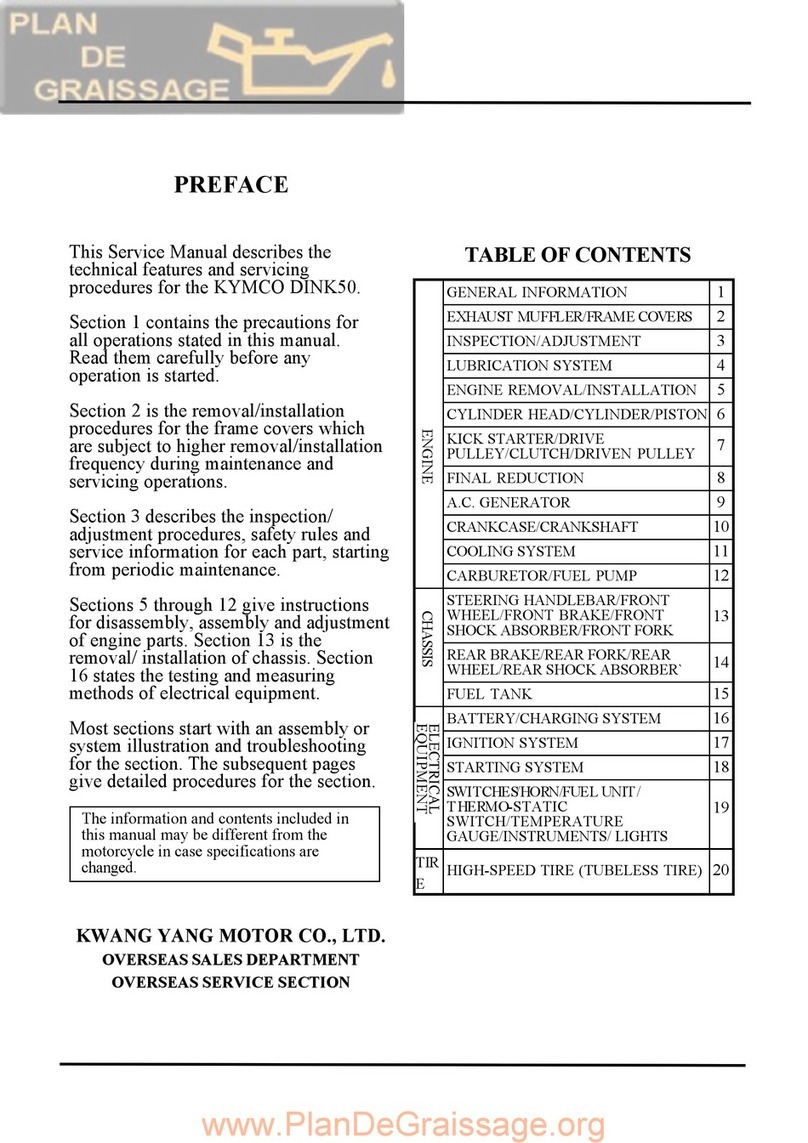
KYMCO
KYMCO DINK50 User manual

KYMCO
KYMCO 125 PULSAR User manual

KYMCO
KYMCO Downtown 350i Operating instructions

KYMCO
KYMCO XCITING S 400 User manual

KYMCO
KYMCO MXU 300 - User manual
Popular Motorcycle manuals by other brands

MV Agusta
MV Agusta Brutale 675 Workshop manual

APRILIA
APRILIA RSV MILLE - PART 1 1999 User manual content

Royal Enfield
Royal Enfield Himalayan 2018 owner's manual

SSR Motorsports
SSR Motorsports Lazer5 owner's manual

MOTO GUZZI
MOTO GUZZI 2005 Griso 1100 Use and maintenance book

KTM
KTM 85 SX 19/16 owner's manual


